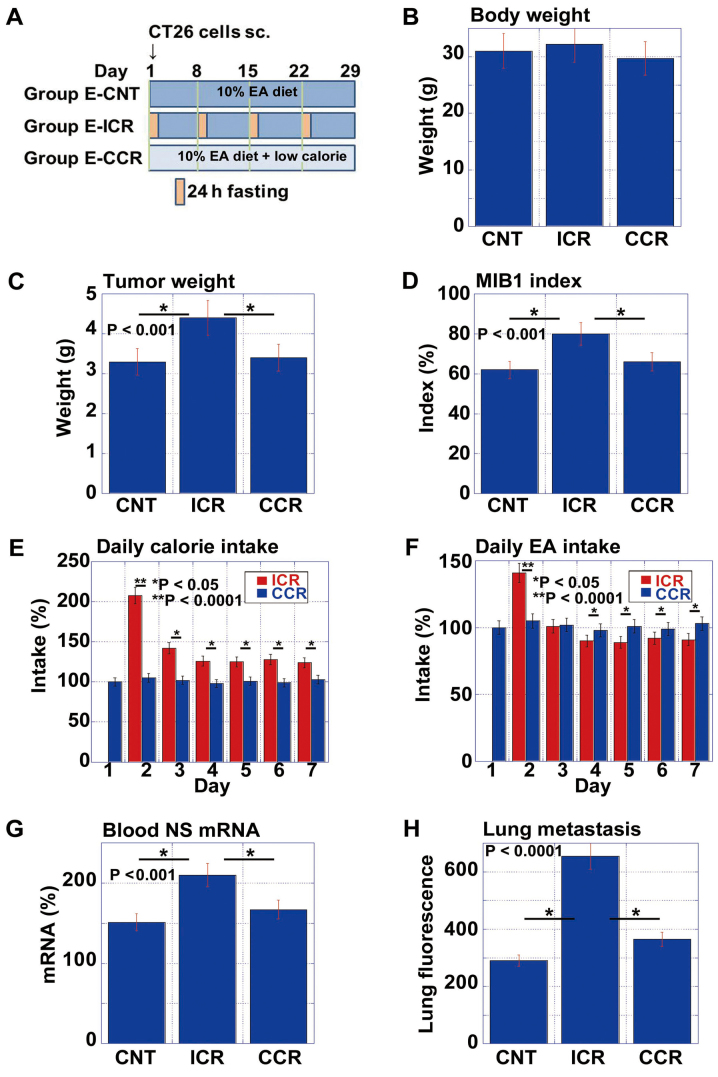Figure 5.
Comparison of elaidic acid (EA)-associated pro-tumoral effect between intermittent calorie restriction (ICR) and continuous calorie restriction (CCR). (A) Protocol for assessing pro-tumoral effect of EA on mice not subjected to calorie restriction (E-CNT), with intermittent calorie restriction (E-ICR), or with continuous calorie restriction (E-CCR). CT26 cells (1×107) were implanted into the scapular subcutaneous tissues of BALB/c mice. For ICR, the mice were subjected to a 24-h fasting period once each a week for 4 weeks. CCR was achieved by feeding a low calorie diet [70% CE-2 (control) + 30% cellulose (w/w)]. (B–D) Body weight, tumor weight and tumor proliferation (MIB1 index), respectively for each of the 3 groups. (E and F) Time-course analysis of calorie intake and EA intake, respectively among the EA-ICR and EA-CCR groups. (G) Nucleostemin (NS) mRNA levels in the blood on day 2. (H) Micrometastasis in the lungs on day 29. Cancer cells were detected by ICG-labeled anti-claudin 4 antibody and measured using an in vivo imager. Error bars indicate the means ± standard deviations.

